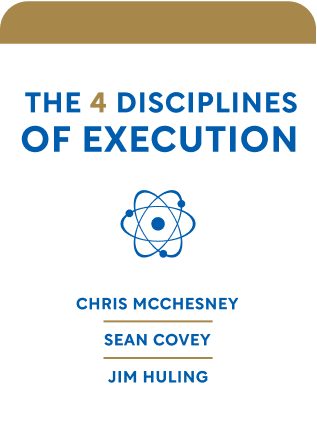

This article is an excerpt from the Shortform book guide to "The 4 Disciplines of Execution" by Chris McChesney, Sean Covey, and Jim Huling. Shortform has the world's best summaries and analyses of books you should be reading.
Like this article? Sign up for a free trial here .
What is the importance of organizational focus? How can you help keep your team and company on track for its goals?
Organizational focus is the level of concentrated effort towards meeting the wildly important goals (WIGs) set for the group. In 4DX, the first discipline is focus, and it is critical for executing your vision.
Keep reading to learn the four rules for organizational focus and applying 4DX in a group setting.
Four Rules for Organizational Focus
4DX can be used in any context, but the authors focus on team and organizational settings. Therefore, in much of the following, the authors refer to two types of WIGs: overall WIGs and team WIGs.
The overall WIG is the WIG for the entire organization, chosen by the senior leaders.
Team WIGs are the goals of specific teams. They move the organization closer to the overall WIG, but the focus or language of the team WIGs may be different from those of the overall WIG.
Once an organization has an overall WIG, there are four rules for applying Discipline 1 for organizational focus:
Rule #1: No team focuses on more than two WIGs.
Across an organization, there may be many WIGs, but within a team, there cannot be more than two.
Rule #2: The WIGs at lower levels of the organization must directly help achieve those at higher levels.
Imagine the WIG at the top of the organization as a war. WIGs at lower levels are battles. The only reason to fight a battle is to help win a war. That’s the metaphor for organizational focus. Once you have an overall WIG, consider how to achieve it with the fewest number of team WIGs (rather than making a to-do list of all the things that must be done to achieve it). This simplifies the strategy.
For example, an Internet provider had a WIG of “Increase sales from $6 to $9 million by February 28.” An outside sales team committed to raising $1 million and the major-account division committed the remaining $2 million. The technology team committed no money but improved the company’s record for uninterrupted service, which was very important to customers and helped the other teams achieve their WIGs.
Rule #3: Senior leaders can veto but not choose the lower level WIGs.
This rule combines the best of top-down (clarity from senior leaders) and bottom up (engagement). The senior leader knows what’s most important, but the team members are the people who will actually have to transform their behavior, so their input is important. If you just do top-down, you’ll have problems with engagement, and accountability might only come from authority. If you just do bottom up, the WIG might not be aligned with the overall WIG. That’s why seniors keep veto powers, in case the team-selected WIGs aren’t appropriate.
Rule #4: All WIGs must contain a measurable result and deadline, in the form of “from point A to point B by deadline.”
This format sounds simple, but many leaders struggle with this rule of organizational focus. Once they figure it out, they’ve achieved clarity and focus.
Consider a goal in the incorrect format like this one from a travel agent: “Increase customer satisfaction.” How do you measure satisfaction? What is the deadline? In short, how do you know if you’ve achieved it? Put into WIG format, the goal becomes: “Increase our customer satisfaction ratings from an average of 50% satisfaction to 70% satisfaction in six months.”
What should the deadline be? A year is a good starting point (since companies often measure things on a calendar or fiscal year). Some take six months to two years. Any project-based WIGs take around the same time as the project. The time frame must be long enough to achieve a compelling goal, but short enough to maintain enthusiasm for the vision.

———End of Preview———
Like what you just read? Read the rest of the world's best book summary and analysis of Chris McChesney, Sean Covey, and Jim Huling's "The 4 Disciplines of Execution" at Shortform .
Here's what you'll find in our full The 4 Disciplines of Execution summary :
- The 4 disciplines that can make any strategy a successful reality
- Why a great plan falls apart when you don't think adequately about execution
- The 6 steps you need to scale the 4DX model across an entire organization






